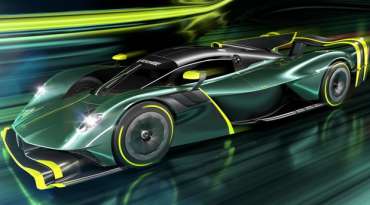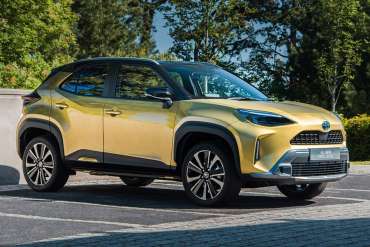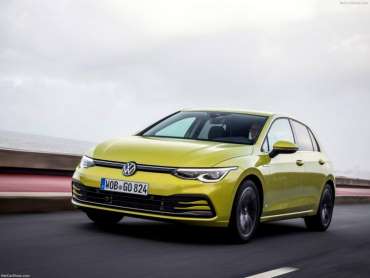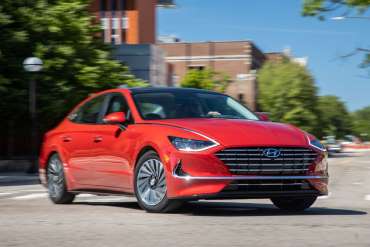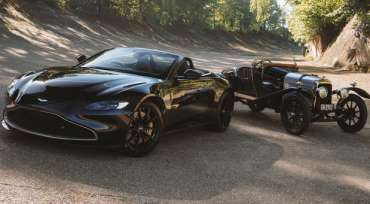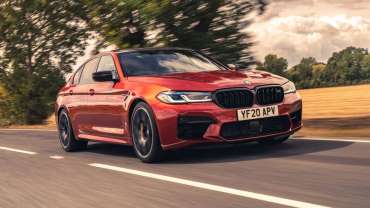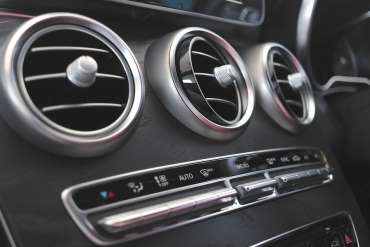
Worldcarblog.com
Aston Martin Valkyrie AMR Pro
Aston Martin has also officially unveiled a new, racing AMR Pro version of the Valkyrie hypercar, which, according to factory claims, crosses the track in 3 minutes and 20 seconds.
The factory statement says that this is a machine that takes as a starting point a car designed to win 24 hours in Le Mans, and then pushes further towards exploring the extremes of performance unlimited racing regulations or registration for use on the road.
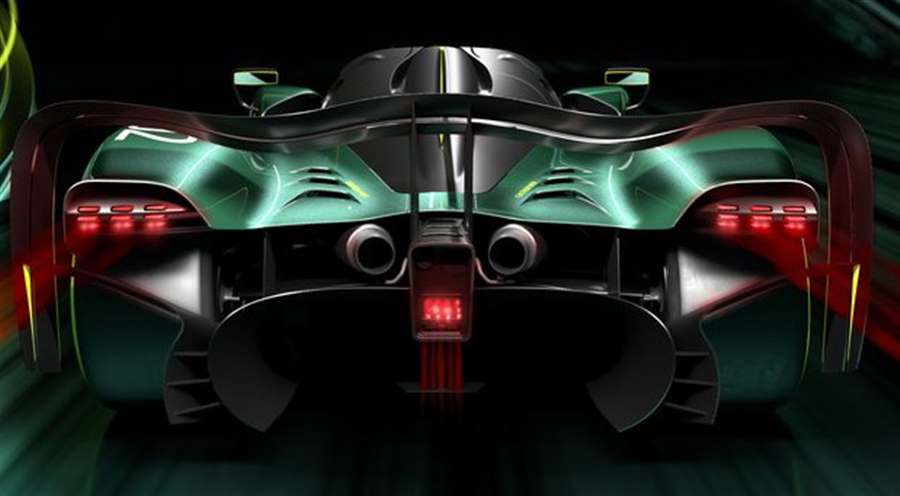
Aston boss Tobias Moers states: "Valkyrie AMR Pro is a project that cannot be compared, it is a real" no rules "racing version. The Valkyrie AMR Pro is a testament to Aston Martin's commitment to clean performance and will be visible in our future product portfolio. "
Here, the Aston Martin has extended the wheelbase by 380 mm, the chassis track by 96 mm at the front and 115 mm at the rear. There’s also a new dramatic aerodynamic package that adds 260mm to the car’s overall length and which Aston claims offers more than twice the thrust of a road car (Aston says it allowed it to accelerate laterally more than 3G).
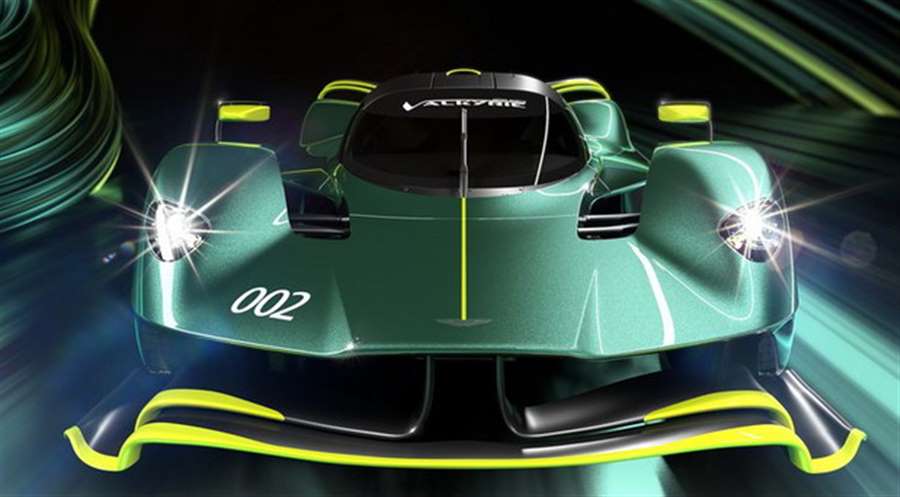
The Valkyrie AMR Pro retains a 6.5-liter Cosworth V12 engine from the road car, although the hybrid system has been removed to save pounds. The engine is set to rev up to 11,000 rpm, and Aston states that it is "on its way" to produce more than 1,000 horsepower by the start of production.
The car also went through a major weight loss program. In addition to removing hybrids, the measures include an "extremely light" carbon fiber body, perspex windshield and side windows ...
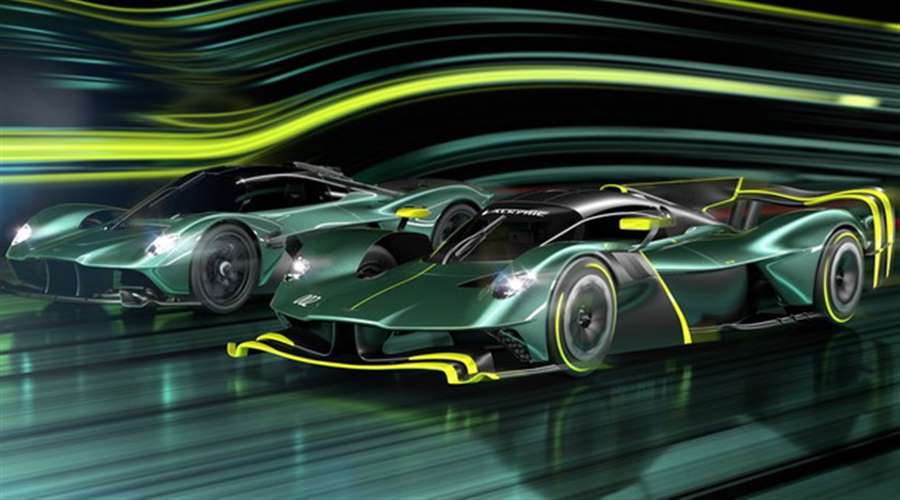
A time of 3 minutes and 20 seconds around the 8.5-kilometer Le Mans circuit would make this car as fast as the new LMH race cars that will be competing this year.
Forty cars will be produced, with the steering wheel on the left side, and deliveries will start in the last quarter of this year. Customers will be invited to a special event lasting one day.
Production should start soon, and deliveries will start before the end of the year. The final testing program of the machine will include current drivers of Aston Martin F1, Lance Stroll and Sebastian Vettel.
Toyota Yaris Cross first drive
Latest small SUV is good to drive and economical
Is the Toyota Yaris Cross any good?
If you're in the market for a small SUV, you're never going to complain that there isn't enough choice out there. With models from Audi to Volvo on offer, there really is something for everyone. And yet, into this mosh pit of new car activity, Toyota has entered the fray, giving us the hybrid-powered Yaris Cross, a funky new offering based on, yes, the Yaris supermini.
It gets Toyota's new, fourth generation hybrid powertrain, and should appeal to those looking for an economical and fun-to-drive small family car that offers lots of room and a family-friendly interior. The firm says it's a genuine SUV, benefiting from all the experience it has amassed with the RAV4, with two models in the range benefitting from AWD-i intelligent four-wheel drive.
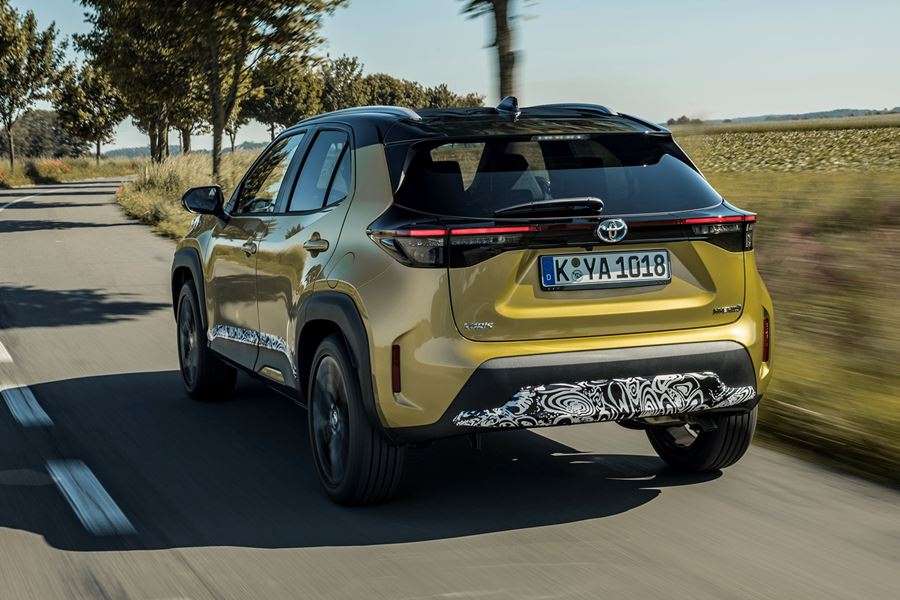
However, it's up against a herd of rivals, and it needs to be good to stand out. Top of your shopping list will be the 2021 Parkers New Car of The Year-winning Ford Puma. But the Peugeot 2008, Nissan Juke, Renault Captur, Skoda Kamiq and Volkswagen T-Cross are all highly-talented alternatives.
The good news is that it has the looks and the hardware to impress in this crowd – as our early drive of a pre-production prototype here in the UK demonstrates.
What's it like inside?
Two words comes to mind after spending time in the Yaris Cross: grown up. It might be closely related to a big-selling small car, but thanks to the high seating position and roomy cabin, it feels like a car from the market sector above. The dashboard, which is similar to its namesake, is fully featured and dominated by a high-set central infotainment screen above digital climate controls (with physical temperature control knobs – yes!)
Features include Apple CarPlay and Android Auto (both tested wirelessly), with an optional head-up display, adaptive cruise control and a fully digital instrument panel also on offer.
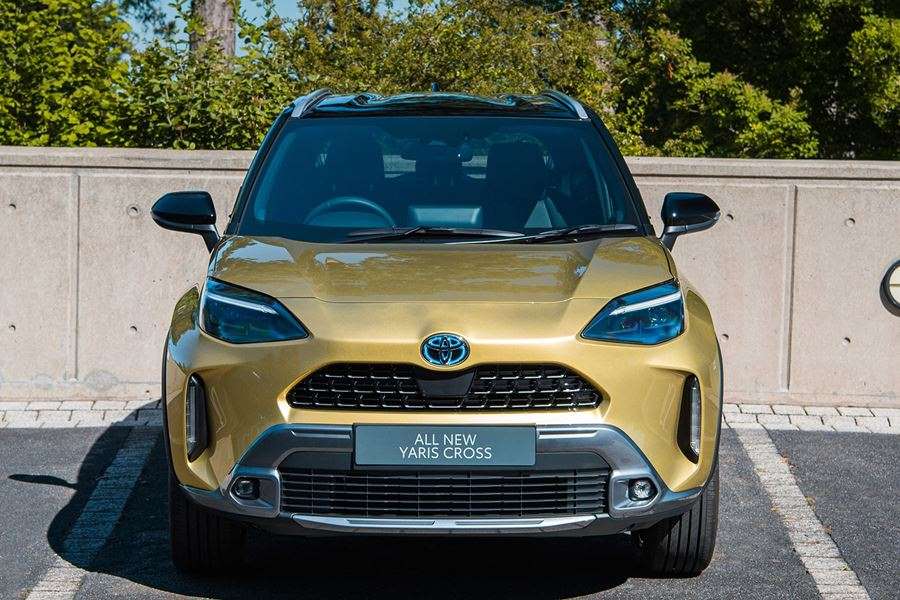
It's solid and well laid-out, with plenty of storage space for your smartphones (room and charging for two), as well as a roomy central cubby hole between the seats and spacious door bins. Our test car was marked down for extensive use of black plastics and dark materials, which means it doesn’t feel as bright and airy inside as some rivals. Having said that, for families, a dark interior is easier to keep clean.
It's 240mm longer than the Yaris hatchback, which allows more room inside. There's plenty of space up front and in the rear, with a pair of tall back-seat passengers being able to make themselves comfortable without too much difficulty. The 40:20:40 split folding rear seat, electric tailgate and split-level boot floor are all positive points. The boot floor panel can be divided in two and the luggage compartment has a flex belt system to keep items securely in place when driving.
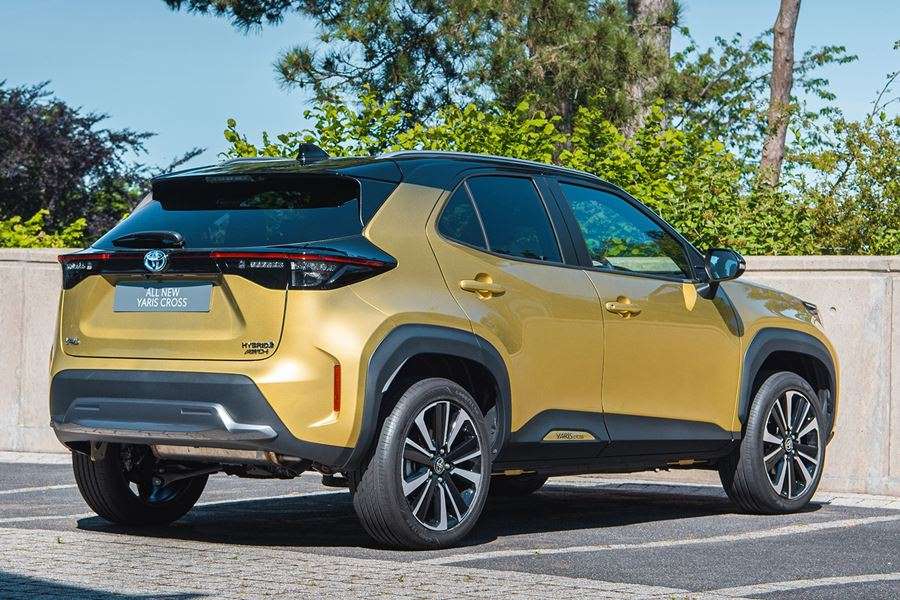
What's it like to drive?
The Yaris Cross comes in only one guise and pairs a 1.5-litre, three-cylinder petrol engine with an electric motor. The total power output of the two is 116hp, which compares well with its rivals. It's based on on the 2.0- and 2.5-litre powertrains in the Corolla, C-HR, RAV4 and Camry, and is good for a WLTP combined fuel economy figure of 65.9mpg and CO2 figures of less than 120g/km (135g/km for the four-wheel drive model).
Maximum speed is 105mph and the 0-62mph time is 11.2 seconds (11.8 for the four-wheel drive version). Although those performance figures don't promise an exciting drive, it feels quick off the mark and smooth in general driving when underway, with the three-cylinder engine humming away quietly in the background. It's best suited to town work, although it's quiet and refined on the motorway, too.
As a conventional hybrid (you don't plug it in), the battery and motor are there to assist the car in certain situations, but a dashboard indictor lets you know how much time it's spent in pure EV mode, and it can be surprising just how much that is. On our mainly urban test route, it reported we were in EV mode for anywhere between 60-75% of the time. We saw it running on battery comfortably up to motorway speeds. Impressive.
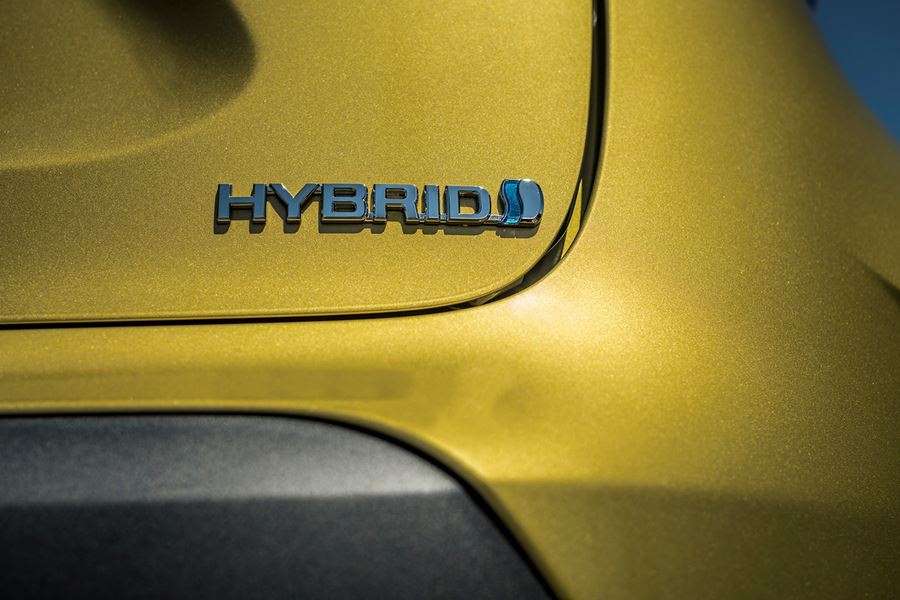
Handling is very good, too, with accurate and well-weighted steering, little bodyroll and a feeling of precision that's quite unusual in this market sector. We wouldn't describe it as sporty, but it's certainly keen and will keep you entertained on B-roads if you're cracking on. Despite this emphasis on roadholding, the ride quality is actually above average – it's firm, but well-damped, which means you'll feel the lumps and bumps, but they don't come crashing through uncomfortably. Overall, a very good effort.
What models and trims are available?
There are four models to choose from, plus a fully-featured Premiere Edition version, available for one year only. The entry-level Icon model comes well-equipped, but then it should, as it's not as cheap as many of its small SUV rivals.
It comes with 16-inc alloy wheels, an 8.0-inch touchscreen infotainment set-up with Apple CarPlay and Android Auto, reversing camera and automatic headlights and wipers. Next model up is the Design, which adds larger wheels, LED headlights, aluminium roof rails and rear privacy glass.
Toyota expects the Yaris Cross Excel model to be its biggest seller, and with that, in addition to the above you also get 18-inch wheels, power-asssted tailgate with kick sensor, a larger 9.0-inch infotainment scren, Blind Spot Monitor and Rear Cross Traffic Alert with auto brake, heated steering wheel and front seats and dual-zone automatic air conditioning.
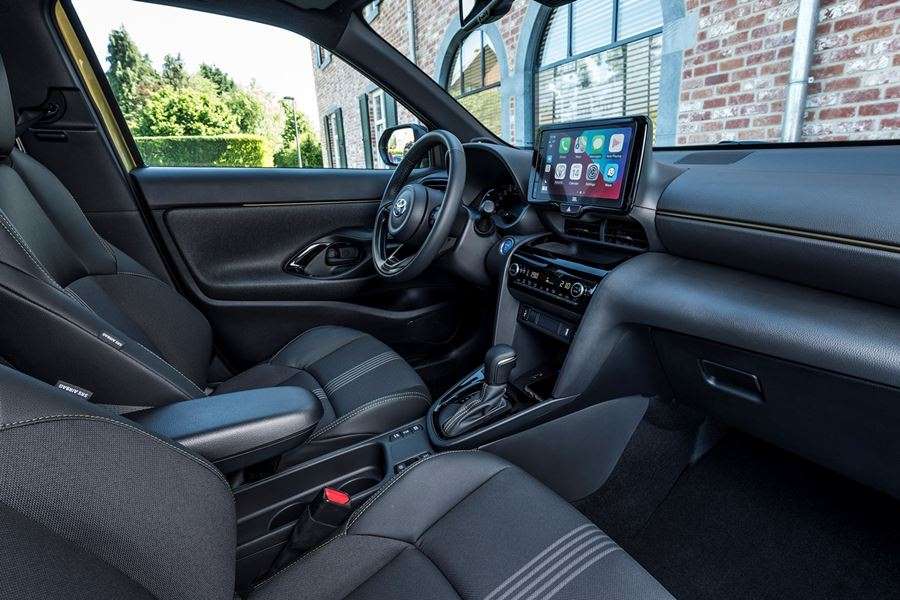
The top-of-the range Dynamic model adds even more features, listed below:
Bi-tone paint finish with black roof
Door mirrors with auto-retracting function
Power lumbar adjustment on driver’s seat
Optional intelligent all-wheel drive (AWD-i)
The limited-edition Yaris Cross Premiere Edition gains black leather interior, a JBL eight-speaker sound system, and 10-inch head-up display.
What else should I know?
All models feature Toyota Safety Sense and driver assistance systems as standard. It can warn the driver of an upcoming collision and help steer and brake it out of trouble, or at least lessen the effects of a collision. It also has pedestrian and cyclist recognition, Lane Departure Alert and Road Sign Assist.
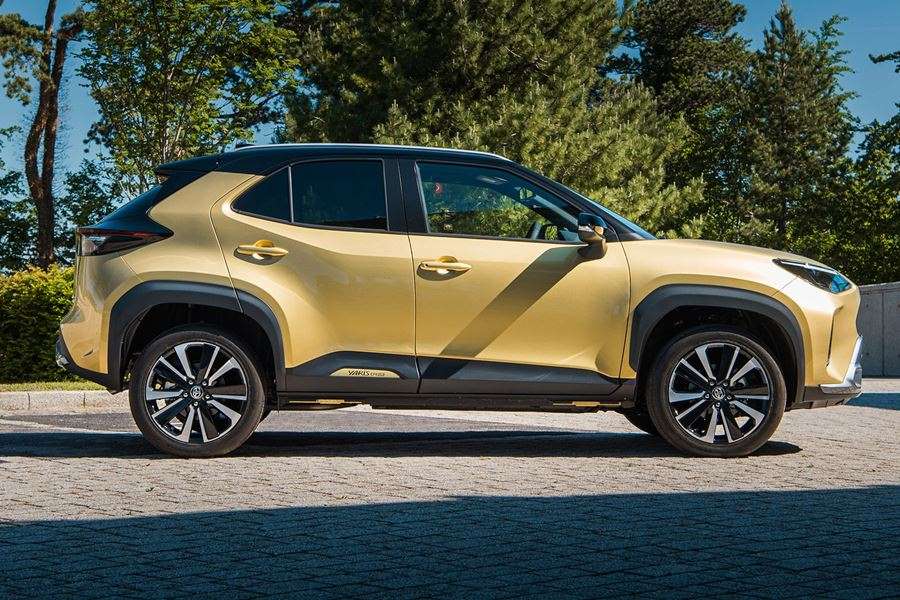
Toyota Yaris Cross verdict
Should you buy one?
Based on the pre-production prototype we've driven so far, it's looking very good for the Toyota Yaris Cross. It's good to drive, practical, roomy for passengers and luggage and in our hands on a fairly congested test route, very economical on petrol. We'll reserve judgement on just how good it is compared with the class-leading Ford Puma and Skoda Kamiq until we've spent more time with it.
Against the popular Peugeot 2008 and Renault Captur, the Yaris Cross looks very good – it's well made and well-equipped although that's reflected in the fact there are no low-priced entry-level models to tempt you into the showroom. But it's a Toyota, so the reliability is a given, the dealer support is excellent, and the warranty cover is now an unprecedented 10 years if you keep it in the dealer network.
It's looking like a safe and sound choice, which might lack the excitement and interest of some of its rivals, but it's looking good for pain-free long-term ownership.
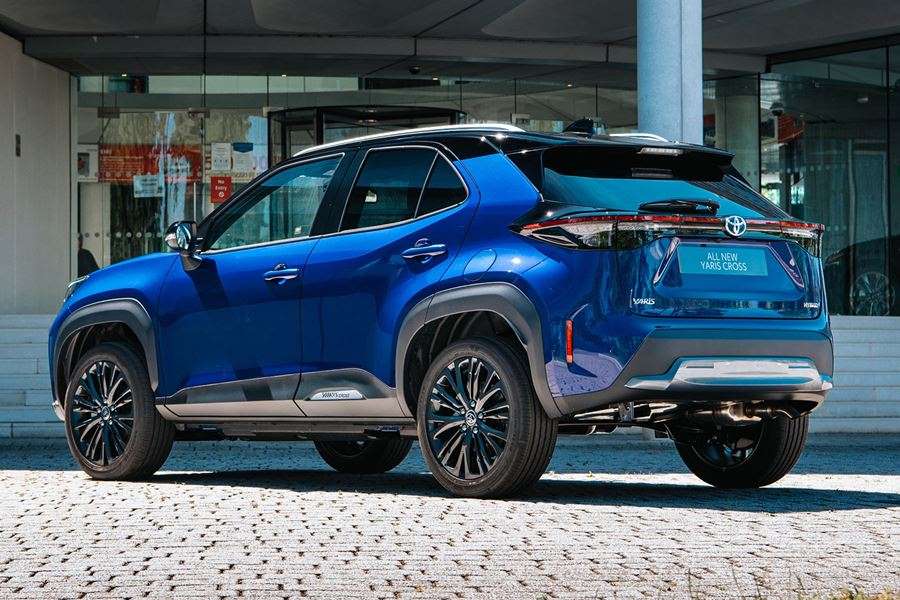
What we like
Despite the bits of camouflage tape on our test car, we can see that it's a good-looking thing, perhaps more so than the Yaris hatchback it's based on. We like the fuel consumption and low emissions, and the fact it's available as a four-wheel drive in the top-of-the-range version.
Handling and ride are definite plus points, as its refinement and smoothness in town. The driving position is good, the controls and features are all easily managed, and there isn't an over-reliance on the touchscreen for basic functions that you'll find in certain rivals.
What we don't like
It's a shame that in offering an all-hybrid line-up in the UK (good), as it comes at a cost (bad). With a starting price well above £20,000, there will be buyers who will be put off going for a Yaris Cross, despite it offering good value for money at a higher price point.
(parkers.co.uk)
No diesel, no problem: Volkswagen shuts down SUS engines
German carmaker Volkswagen will suspend sales of cars powered by internal combustion engines in Europe by 2035 and focus entirely on electric cars, while this change will arrive later in the US and China, said one of the members of the Board of Directors of the VW Group.
"We are leaving the market for cars powered by internal combustion engines in Europe between 2033 and 2035, and later in the United States and China," said Klaus Zellmer, Member of the Board of Management of the Volkswagen Group in charge of sales.
"As far as South America and Africa are concerned, conventionally powered cars will stay there for a bit longer due to the fact that there are no legal frameworks that provide time limits for achieving zero emissions," he added.
In addition, Zellmer told the German newspaper Muenchner Merkur that by 2050 at the latest, the entire Volkswagen range should be completely CO2 neutral.
The idea is that in Europe, by 2030, electric cars will make up 70% of Volkswagen's total sales, which would allow them to avoid the severe penalties imposed by the European Union for all car manufacturers that exceed the CO2 allowance.
Tested: 2021 Hyundai Sonata Hybrid Limited Can't Keep Up
It doesn't offer the same driving dynamics as the Honda Accord, but the Sonata's hybrid model has the best fuel economy of the mid-size family sedans we've tested.
Hyundai redesigned its Sonata sedan in 2020, hoping that its new styling and updated tech would help it compete with other popular mid-sizers such as the Toyota Camry and our longtime favorite in the segment, the Honda Accord. But while Hyundai sold 76,997 Sonatas last year, Honda moved nearly 270,000 Accords, and nearly 300,000 Camrys found new homes, proving that the winnowing of the sedan category—no more Ford, no more General Motors—has left only the most ruthless competition. And to compete with the Camry and Accord, it's a given that you need to offer a fuel-sipping hybrid model. Hyundai actually offers two distinct electrified Sonatas, the Sonata Hybrid and Sonata Hybrid Blue, with the latter scoring an EPA combined 52 mpg. Unlike the Accord, however, fun behind the wheel doesn't seem like it was part of the Sonata's design brief.
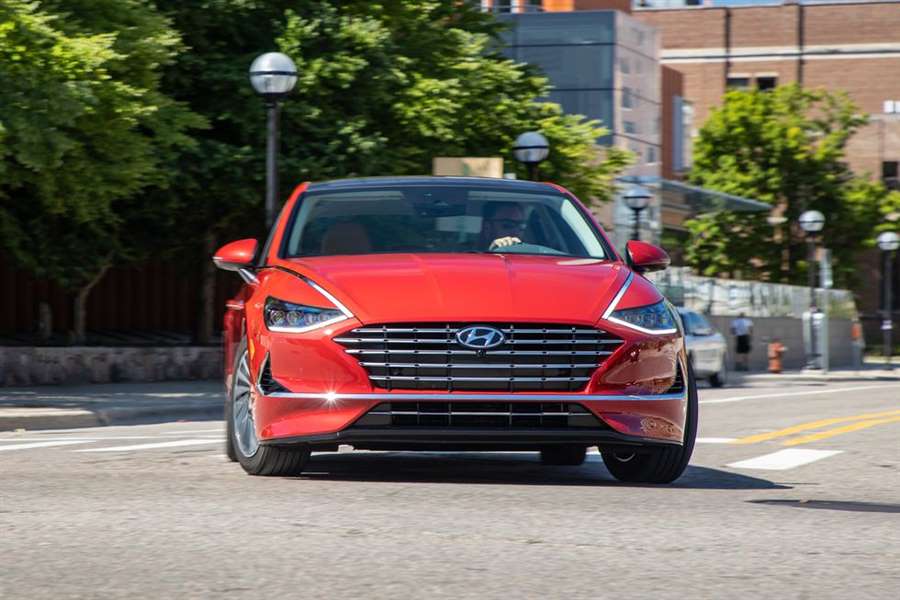
Sonata Hybrids are powered by a 150-hp 2.0-liter four-cylinder paired with an electric motor and battery pack, generating a combined 192 horsepower. The updated model has new shift programming for the six-speed automatic transmission, which Hyundai claims makes the shifts smoother. Nonetheless, the transition between the electric motor and gas engine is convulsive, and there's occasional lag when shifting. The Sonata's conventional automatic transmission makes it an outlier in the mid-size hybrid crowd, with the Accord using a one-speed direct-drive transmission and the Camry employing a continuously variable automatic (CVT). The Accord isn't much more powerful than the Sonata—it's rated at 212 horsepower—but it's a full second quicker to 60 mph, taking 7.1 seconds to reach 60 mph compared to the Sonata's 8.1-second plod.
HIGHS: Exceptional fuel economy, luxurious cabin in top trim, solar roof.
Hyundai's new look for the Sonata is generally attractive, even if it looks a bit awkward from a few angles, and our test car's 17-inch wheels, standard on the SEL and Limited models, don't help its looks, either. But small wheels do help with its fuel economy, as indicated by the Blue's EPA numbers—it uses 16-inch wheels. Honda's top Touring trim for the Accord Hybrid can be equipped with a set of 19-inch wheels, which likely hurt its fuel economy in our most recent test.
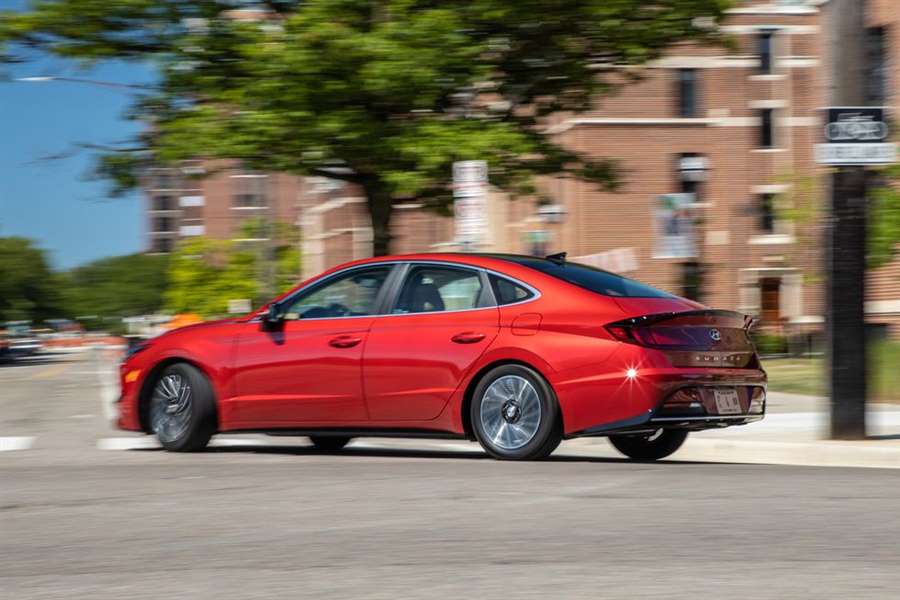
When we tested a 2020 Hyundai Sonata Hybrid, we achieved 51 mpg during our 75-mph highway fuel-economy test. And we barely noticed the fuel gauge ticking down during our time with this 2021 example. The 2021 Sonata Hybrid is EPA rated at 47 mpg combined, while the Blue model earns a 52 mpg rating thanks to a 16-inch wheel-and-tire package and the removal of the spare tire. A Honda Accord hybrid only managed 35 mpg in our highway fuel-economy test, a deficit that can't be ascribed to any one factor. But on the highway, the Sonata's conventional automatic transmission and smaller wheels and tires definitely gave it an advantage. The Toyota Camry scores up to 52 mpg in the EPA's ratings, but the CVT-equipped Camry is also less than enthralling to drive.
LOWS: Looks awkward from some angles, unpleasant powertrain, lazy acceleration.
Exclusive to the Limited model, the Sonata offers a feature unique in the segment: solar panels on the roof. Hyundai says that the solar roof can add up to two miles of driving range per day, and it charges both the standard 12-volt battery and the hybrid powertrain's 1.6-kWh lithium-ion battery pack. Should the 12-volt battery go dead, the Sonata is the rare hybrid that can jump-start itself. Push the 12V Batt Reset button on the dash and the Hyundai will use its high-voltage battery as an onboard jump pack. Very clever.

Hyundai's SmartSense driver-assistance package is standard on all models, and it includes lane-keeping assist, braking assist, and a driver monitoring system. Unfortunately, Hyundai's Smart Park remote parking system—remember that Super Bowl commercial?—is absent from the hybrid's roster of options. Fortunately, the car's surround-view camera and front and rear parking sensors make parking easy.
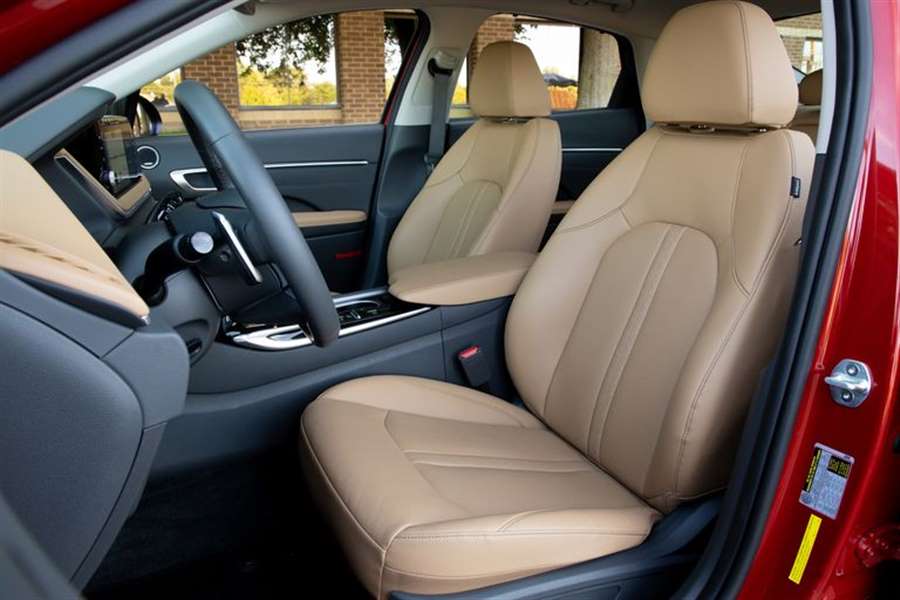
As soon as you open the solid-feeling door, it's evident that this is a relative of Genesis, Hyundai's luxury wing. The driver's seat seems unusually high, perhaps a subtle bid to keep potential crossover buyers in the sedan camp. Upon start, the gauge cluster comes to life with crisp, animated graphics that look like something from a German brand. However, the 12.3-inch screen behind the wheel is only available on the top-of-the-line Limited model. Touches of Genesis carry over into the climate controls, too, where textured silver rings surround the knobs. The Limited gets a 10.3-inch dash infotainment screen, with other models getting an 8.0-inch screen. There, as in other Hyundai and Kia products, drivers can select an array of calming sounds, like a crackling fireplace.
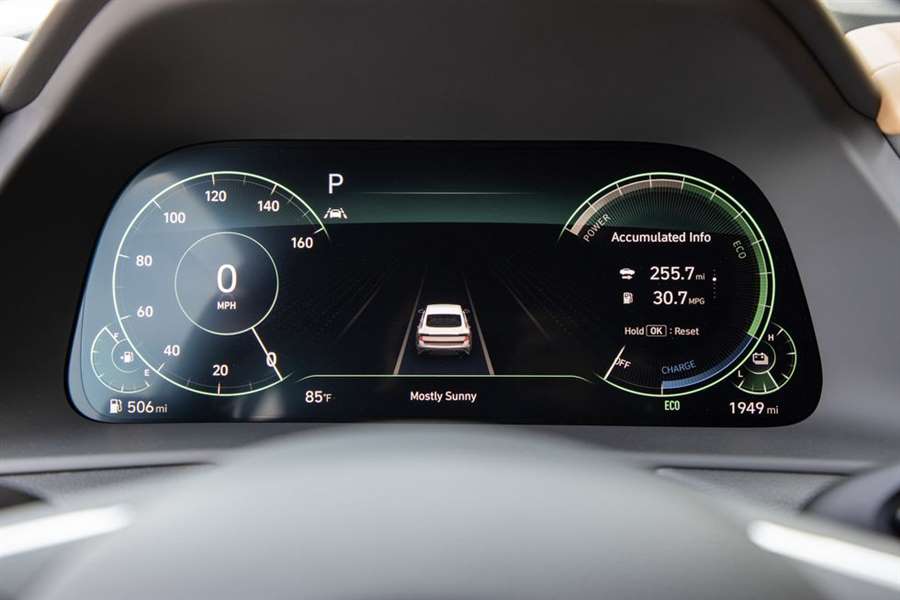
The Sonata Hybrid slots between the Accord and Camry in price, starting at $28,755 for the base Blue model. Our Limited test car, which included full LED headlamps, the solar roof, and a leather interior, stickered for $36,474, which still puts it well below the average new-car price. The Sonata might not be the performance champ of the mid-size-hybrid segment, but it does have its particular merits, stellar highway fuel economy and styling that dares to have a point of view among them. But you get both of those things on the least expensive model, the Blue, along with an extra five miles per gallon. So, while we enjoy luxury frills as much as anyone, it seems that the most compelling Sonata Hybrid is also the most affordable one.
(caranddriver.com)
Aston Martin Vantage A3
Aston Martin has announced a limited edition of just three units of the Vantage Roadster, to mark the centenary of the A3, their oldest surviving sports car.
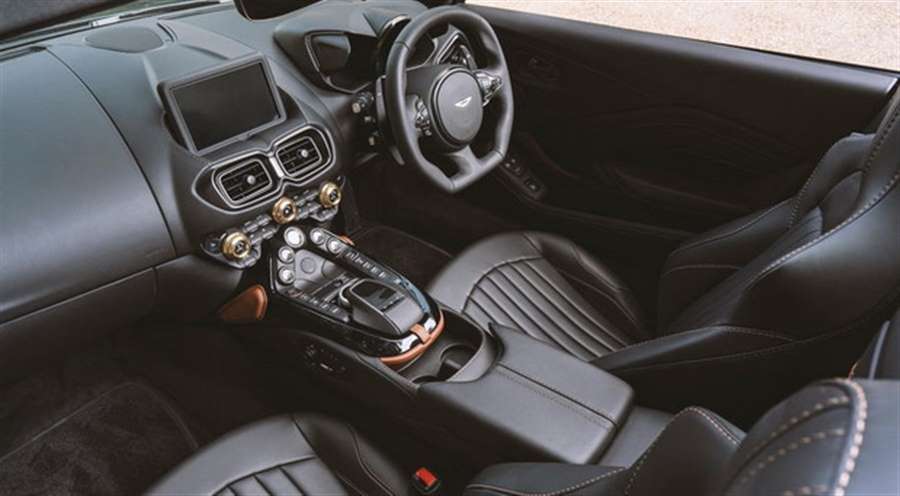
The Aston Martin Vantage A3 is inspired in detail by a 1921 model, which includes a black front grill with an aluminum frame, a black exterior and black wheels with bronze-colored brake calipers (the wheels are usually 20 inches).
There are also black leather sports seats, bronze-colored details, contrasting seams and special inscriptions in the interior.
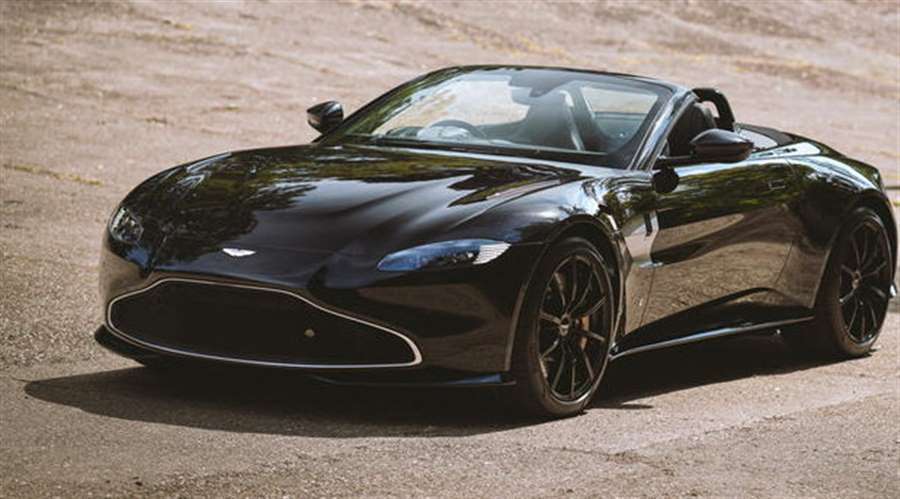
It should be noted that the lowering / raising of the roof is done in less than seven seconds, and this can be done at speeds up to 50 km / h.
The Vantage Roadster is powered by a 4.0-liter Mercedes-AMG
BMW M5 saloon review
The BMW M5 is the high-performance version of the standard BMW 5 Series and competes with the Mercedes-AMG E63, Porsche Panamera and Audi RS7 for buyers looking for a ‘super saloon’. The Mercedes matches the BMW most closely in shape and price, though – both are four-door saloons that will set you back nearly £100,000 before options.
A substantial amount of what you’ll pay for the car goes towards what’s under the bonnet. Now available in ‘Competition’ spec, the M5 is powered by a 616bhp 4.4-litre V8 petrol engine that takes the car from 0-62mph in only 3.3 seconds. Considering it weighs almost two tons, both the M5’s straight-line speed and agility are remarkable.
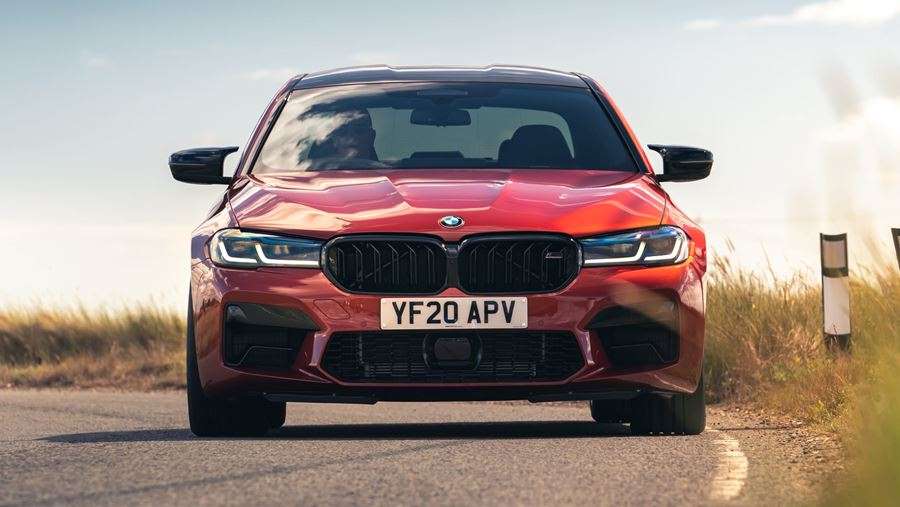
When the ‘F90’ M5 model was originally launched, it had 592bhp, with the 616bhp Competition model adding around £7,000 to the list price. As well as the extra power, it also had some styling tweaks, a sports exhaust and revised suspension.
In late 2020, the M5 Competition was facelifted along with the standard 5 Series. The changes included a tweaked front end, new LED lights and extra paint finishes. The interior was also updated with a new 12.3-inch infotainment system, and an array of new safety tech was added. Chassis changes were limited to a new adaptive suspension setup borrowed from the current M8 Gran Coupe.
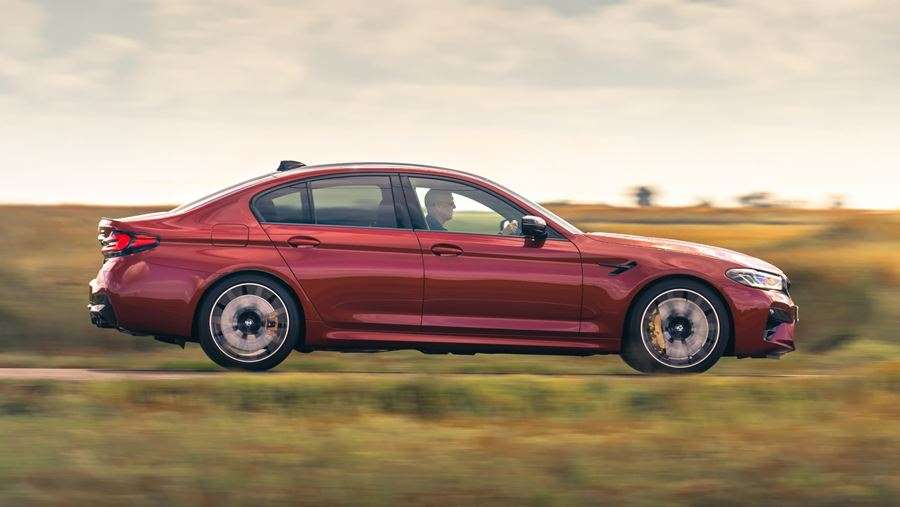
While the facelifted version of the M5 Competition will set you back over £100,000 before options, BMW also introduced an even faster model in 2021. Dubbed the M5 CS, it’s lighter than the standard car (weighing around 1,800kg) and is billed as a track-focused saloon. It’s quicker too, managing 0-62mph in three seconds thanks to an increased power output of 626bhp. Naturally, it costs more than the standard car, with a starting price of around £140,000.
The M5 Competition is equipped with BMW’s M xDrive four-wheel-drive system, which means there’s more grip and cornering performance than ever. Purists will be heartened to hear that firstly, the system has been engineered to give the car a rear-wheel-drive feel and, secondly, there’s a mode to send all power to the rear if you want.
While it’s incredibly quick, the M5 Competition is also capable of satisfactorily carrying out the duties of a luxury saloon car. In Comfort mode, the ride is soft enough to soak up all but the worst bumps in the road and the interior is plush and luxurious.
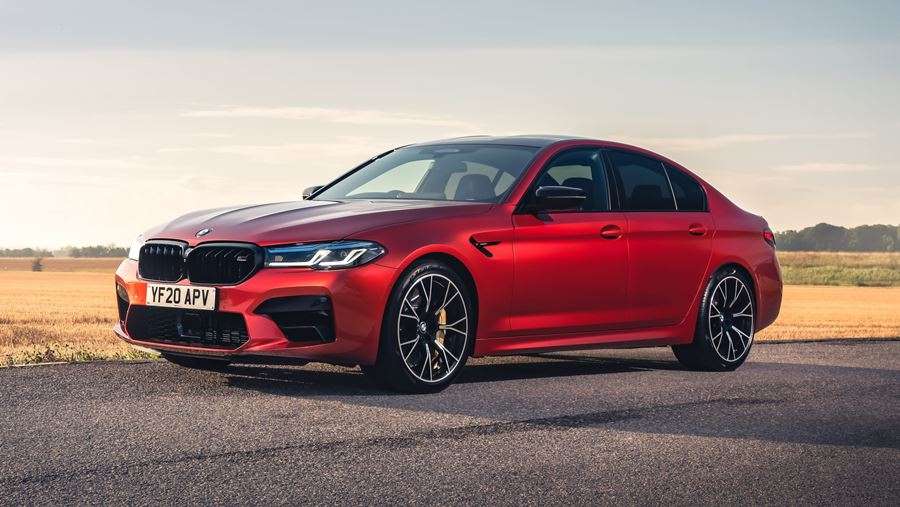
However, despite its brilliance as a high-speed cruiser and its competence on twisty roads, the latest M5 doesn't quite engage you the way its predecessors did – it feel like there's a hi-tech barrier between you and the car; the steering feels well weighted but it's surprisingly muted in terms of feel, for example.
But this criticism is also true of many of the M5's super saloon competitors and is something of a sign of the times. It doesn't prevent the BMW from being at least equal to its Mercedes rival - even if the Merc has the more exciting engine - and in Competition form, the M5 is the best all-round supersaloon you can buy. Its handling flaws can also be remedied if you're prepared to pay the extra for the M5 CS, because its revised suspension is a revelation. Not only does it feel more settled, it's better to drive and more involving too.
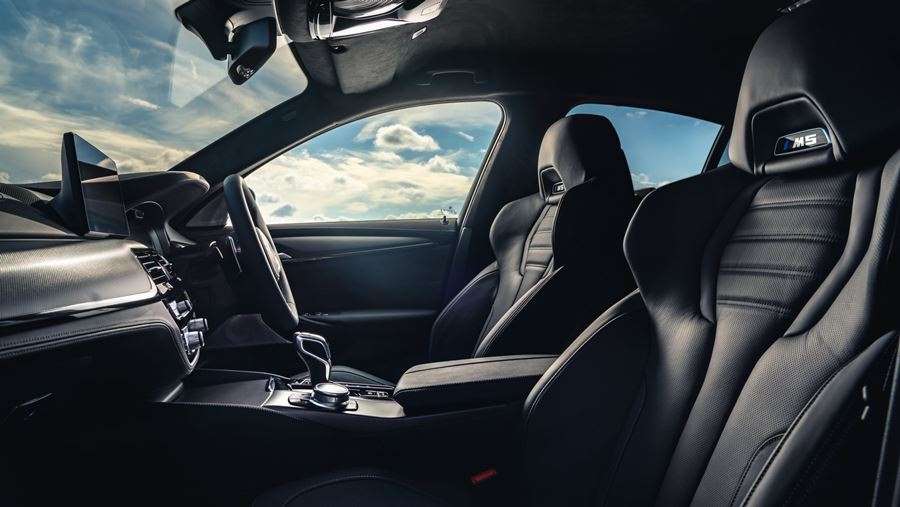
MPG, running costs & CO2
The BMW M5 isn't cheap to buy and it won't be cheap to run either
The M5 Competition is only available with one large engine and it’s been designed for power rather than fuel economy. The introduction of turbocharging and the downsizing of the engine compared with previous M5s is a nod to improving efficiency, but the 4.4-litre V8 still only returns around 25mpg, which we were able to get close to during our test. However, as with any super saloon, driving the M5 with any kind of enthusiasm or in heavy traffic will lead to fuel economy figures dropping into the mid-teens or lower.
After the first year's CO2-based road tax (generally included in the on-the-road price), every M5 will cost the standard rate each year to tax. With a list price of more than £40,000, the M5 is also liable for an additional VED surcharge in years two to six of ownership, making the bill higher during that period. CO2 emissions starting from 254g/km place the M5 in the highest Benefit-in-Kind band for company-car drivers and it's also expensive to insure, sitting in the top group 50.
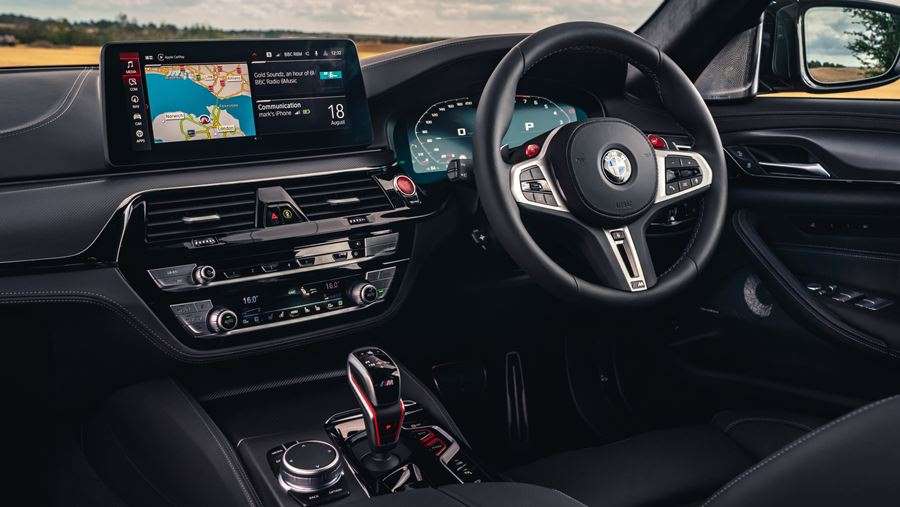
Engines, drive & performance
The BMW M5 is incredibly quick and a great driver's car
The M5 Competition uses a twin-turbo 4.4-litre V8 engine that produces 616bhp and gets the car from 0-62mph in 3.3 seconds. On paper, it has the edge on performance over the Mercedes-AMG E63 and only just falls behind the E63 S, but its engine goes about its business in a rather different way to its rival. Where the Mercedes barks and rumbles, the BMW screams and howls; it'll come down to personal taste which sound you'll prefer. The heart of the matter is that the M5 feels more like a racing car than the E63, but that's not necessarily what you want from a supersaloon.
The standard M5, originally launched in 2018, produced 592bhp and was capable of 0-62mph in 3.4 seconds, only slightly behind the 3.3 seconds of the Competition version.
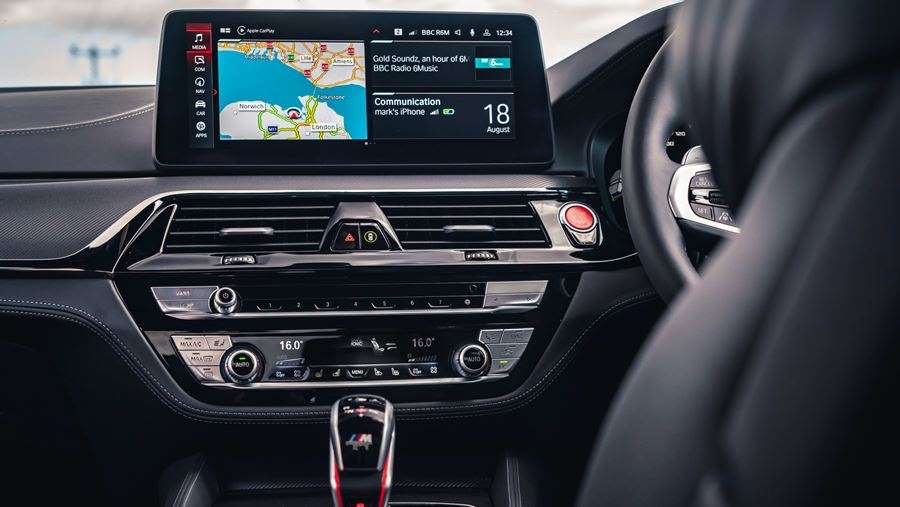
While the M5 Competition isn’t noticeably faster in a straight line than the standard M5, it gets an array of minor suspension tweaks that really improve its overall performance. The changes mean the Competition is more responsive, with more precision and sharpness than the standard M5. Body control is even more impressive too.
The use of BMW’s xDrive four-wheel-drive system for the first time in the M5's history means there’s no shortage of traction when you put your foot down, with immense levels of grip during standing starts and when accelerating through corners. Despite sending power to all four wheels, the M5 feels like a very balanced rear-wheel-drive car, with the majority of the engine’s power going to the rear wheels during normal driving.
The M5 also has a clever Active M differential that apportions power between both sides of the car to aid cornering performance, while the xDrive system can send power to the front wheels to help pull you out of fast corners.
The car’s setup and driving modes can be controlled via the red coloured steering-wheel mounted ‘M1 and ‘M2’ buttons allowing you to link each to a preset mode. For those who prefer to use the M5s standard settings, the buttons can quickly cycle through Road, Sport or Track mode as well.
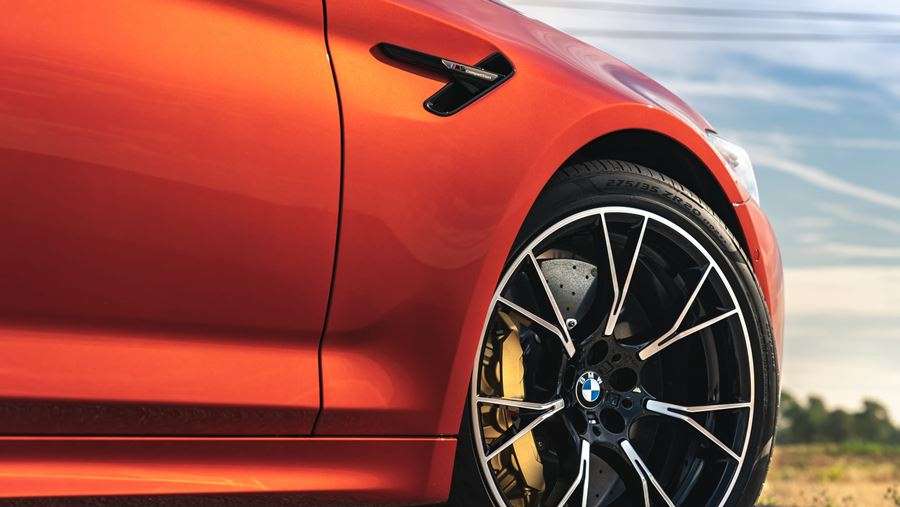
It's a very responsive system and unobtrusive in operation, suiting the M5's eye-watering speed – we managed 0-62mph in just 3.2 seconds in testing. The eight-speed automatic gearbox performs obediently, too, changing gears smoothly and quickly when you demand it through the column-mounted shift paddles.
Carbon-ceramic brakes are an expensive extra at around £7,670 but they provide huge stopping power on a consistent basis and seem particularly suited to a car of the M5’s power and weight. This option also adds a gold paint finish to the brake calipers.
The optional M Pro package focuses on performance raising the car’s top speed to 190mph from an electronically limited 155mph. It also adds the carbon-ceramic brakes, and costs an extra £7,995. The package also includes a one-day BMW M driver training course at a track in either the UK or in Germany.
For all its power and prowess, the M5 Competition lacks the absolute ultimate in excitement, mainly because of its slightly inert steering. Although accurate enough in use, it seems to filter out some of your inputs, so you never feel quite as connected to the car as you'd like.
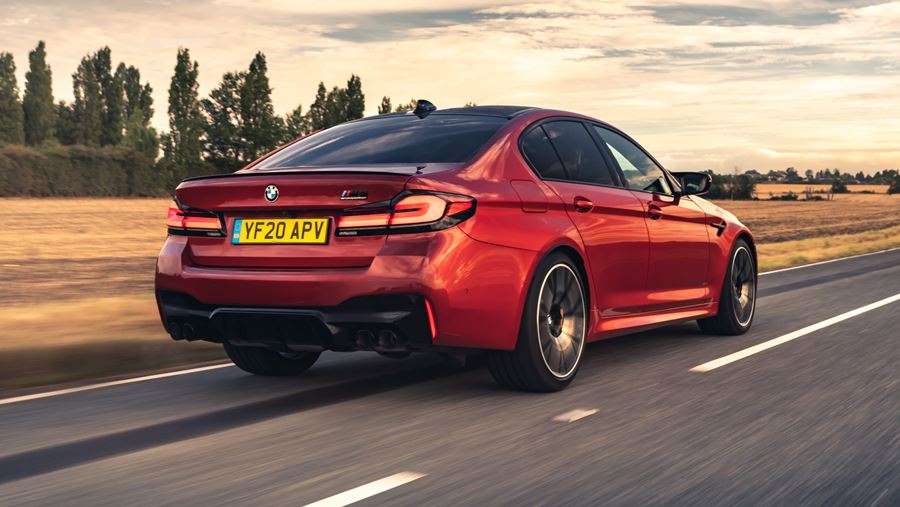
While the Mercedes-AMG E63 does provide a more visceral driving experience, with its snarling exhaust note and more overtly muscular character, there’s no doubt that in Competition spec, the M5 is closer to matching its German rival for sheer exhilaration and driving thrills.
Released in 2021, the BMW M5 CS (Club Sport) successfully fixes most of the Competition's faults, if you're prepared to spend around £140,000 on a saloon car. Fitted with the adaptive dampers from the M8 Gran Coupe, it sits just 7mm lower, but the car feels more stable and less upset by even roads. This improves driver confidence and makes the driving experience feel more fluid.
Power increases to 626bhp and the CS weighs around 70kg less than the regular car, cutting the 0-62mph time to three seconds. It's the most powerful production BMW car ever built but it's the handling upgrades that make the biggest difference. Carbon-ceramic brakes are fitted as standard to boost stopping power.
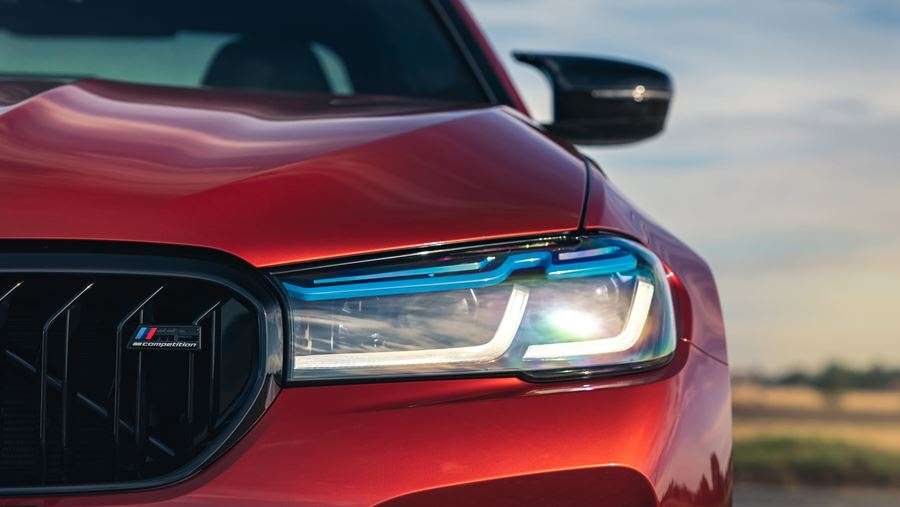
Interior & comfort
Luxurious comfortable interior with plenty of standard equipment
The M5 comes with heated leather sports seats for the driver and front passenger, which give huge amounts of support and comfort. The dashboard is logically laid-out and the controls for the car’s on-board tech and systems are easy to use. The M5 comes with a leather interior as standard, giving it the upmarket feel inside you’d expect from an expensive BMW. Choose the M5 CS and the exterior is set apart by a new bodykit, with a large diffuser between the quad exhaust pipes.
Also present is BMW’s iDrive infotainment system, which runs on a crystal-clear 12.3-inch infotainment touchscreen. It's quick and responsive to use, with clear graphics. Every M5 gets an array of technology as standard, including sat nav, wireless Apple CarPlay and Android Auto, and wireless charging for your smartphone. A new 12.3-inch digital dial cluster also features, alongside a head-up display with unique M Division graphics.
The rotary controller has a touch-sensitive top, which allows you to sketch the shape of a letter on the pad with your finger (to enter a postcode for the sat nav, for example), rather than use the wheel to scroll through the alphabet. The system is packed with features and very easy to use.
The M5 is undoubtedly a performance car, but it’s also a luxury saloon and the ride manages to be impressively smooth when the car’s adaptive dampers are in Comfort mode. Even with large 20-inch alloy wheels, which can so often transmit every little imperfection from the road inside, the M5 is still sufficiently compliant to make the car a comfortable motorway cruiser.
This is one way in which the M5 trumps the Mercedes-AMG E63, as the latter feels much firmer and less comfortable by comparison. The Sport setting for the M5's dampers improves body control at the cost of some of the smoothness in Comfort, while the Track mode is best saved for a circuit, as the ride becomes so firm that any passengers will get shaken around. Some may feel the bucket seats fitted in the M5 CS are a step too far for an everyday car. They’re the same carbon items available in the latest M3 and M4, offering excellent support but feeling quite hardcore for a luxury saloon.
Practicality & boot space
The BMW M5 is as practical as the standard 5 Series
The M5’s chunky front sports seats don’t have a noticeable impact on rear space, so passengers in the back still have good head and legroom. Storage spaces are generously sized, with plenty of room in the door bins, glovebox and central cubbyhole. There are cup-holders and a place to charge the car’s Display Key or your mobile phone wirelessly.
Despite having a four-wheel-drive system, which can often impinge on boot space, the M5 still offers 530 litres of luggage room, just like the standard 5 Series. This is fractionally smaller than the 540 litres offered by the Mercedes-AMG E63, but certainly not enough of a difference to be a deciding factor in which of the two cars you choose to buy.
Reliability & safety
Expect the BMW M5 to match the high standards set by the basic 5 Series
BMW finished in 27th place out of 30 manufacturers in our 2020 Driver Power poll, lagging behind German rivals Audi who placed 21st. it's a worrying trend, particularly as it was partly down to 20.8% of owners reporting at least one fault within the first 12 months of ownership.
The M5 won’t be crash-tested as a standalone model, but when the standard 5 Series was put through its paces by Euro NCAP, it was awarded a five-star rating, with an adult occupancy safety score of 91%. It achieved an 85% score in the child occupant category and the car’s autonomous emergency braking system was highly commended.
The latest M5 Competition carries over all of the safety technology from the facelifted 5 Series, including updated lane keeping, lane changing assist and a 360-degree camera. Buyers can also add the Driving Assistant Professional, which uses the Active Navigation to automatically perform lane changes in advance. Rear cross-traffic alert and adaptive cruise control also feature.
BMW’s Parking Assistant Plus system was added to the M5 in the mid-2020 facelift, and is capable of automatically reversing the car into a space for a distance of up to 50 metres. A further addition is Drive Recorder, which uses a series of cameras dotted around the bodywork to continuously record footage as you drive, automatically saving the 20 seconds before and after any collision.
(carbuyer.co.uk)
The air conditioning in the car has stopped cooling! Here's what you need to do!
If you have a relatively new or older car that just a few days ago, just when these high daily temperatures started, simply built-in air conditioning stopped cooling, you really have no luck.
No cooled air coming out of the ventilation opening? So far you have not had any problems with the car air conditioning and now you do not know what to do! We have the answer to questions like this…
We advise you to leave your car in the hands of a specialist in the repair of car air conditioners who has many years of experience. Regardless of the age of your car, 3 to 8% of the gas in the cooling system is lost every year and its efficiency decreases. The service technician needs to see where the fault is, maybe the compressor is working, but the gas has come out of the system, so it cannot cool the air inside the vehicle cabin. In any case, an expert will fill your air conditioner with gas and contrast, and in a day or two you will be called in for a check-up so you can see where the gas is coming out and recommend a way to repair it.
Filling the air conditioner with gas without contrast currently costs from 150 to 250 kuna, and the price of the repair depends, of course, on the severity of the fault, which can only be determined by diagnosis. During service, the refrigerant gas is removed from the system and impurities and moisture are removed from it. The system is vacuumed to remove moisture from the system and refilled with recycled and purified gas and refilled with new as needed.
In addition to gas, the system is also filled with compressor lubricating oil. A contrast agent is added to the gas to make it easier to check the tightness of the system. It is recommended to do the service every two years.

